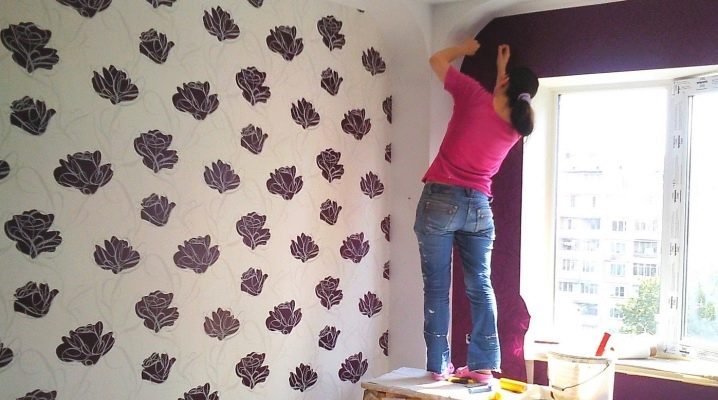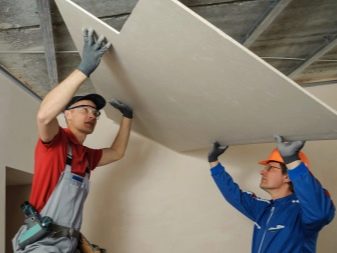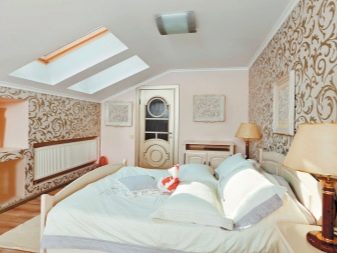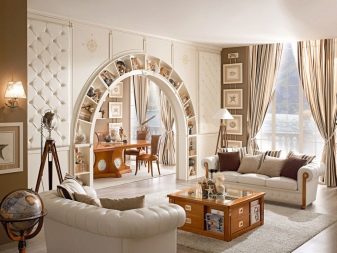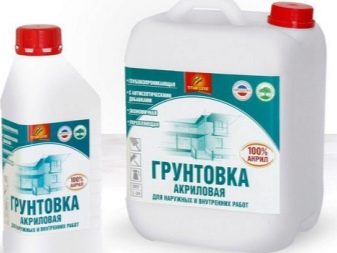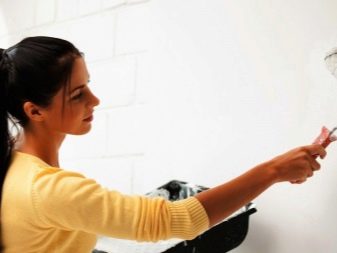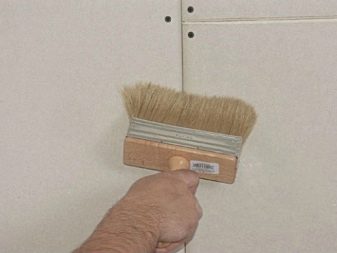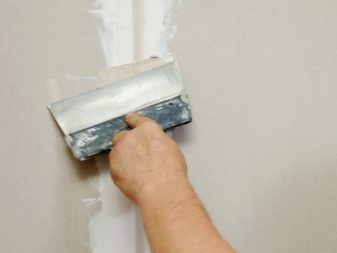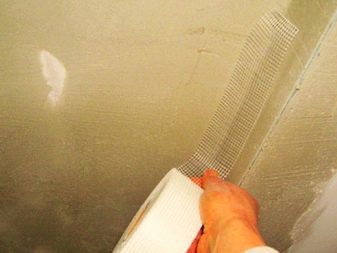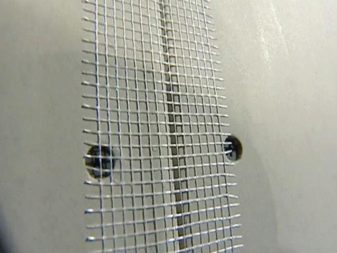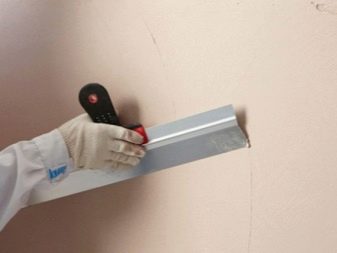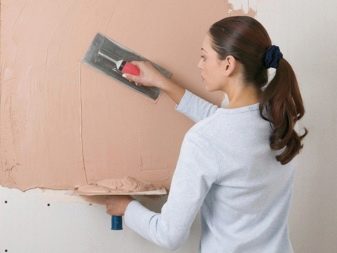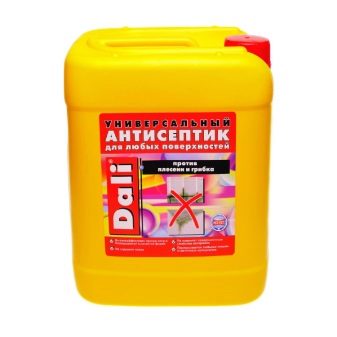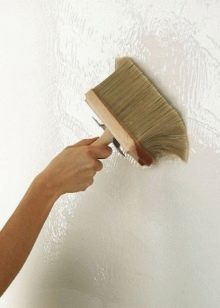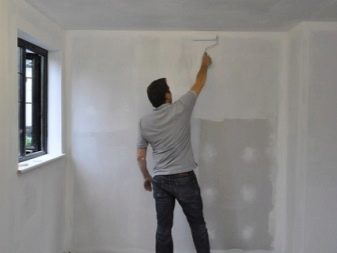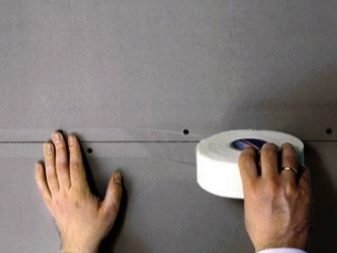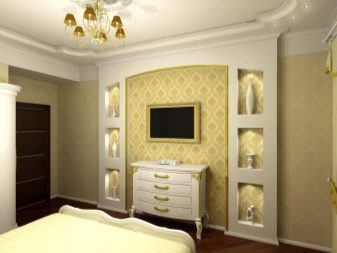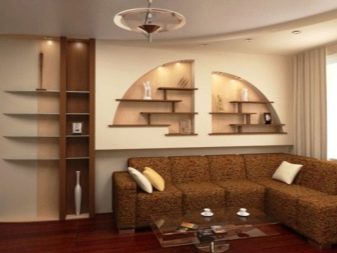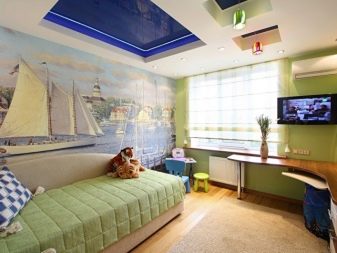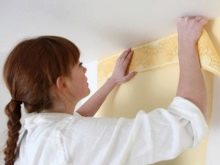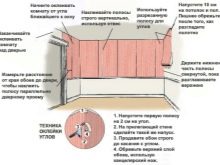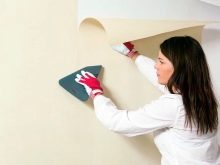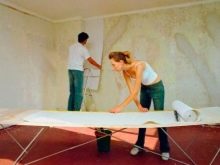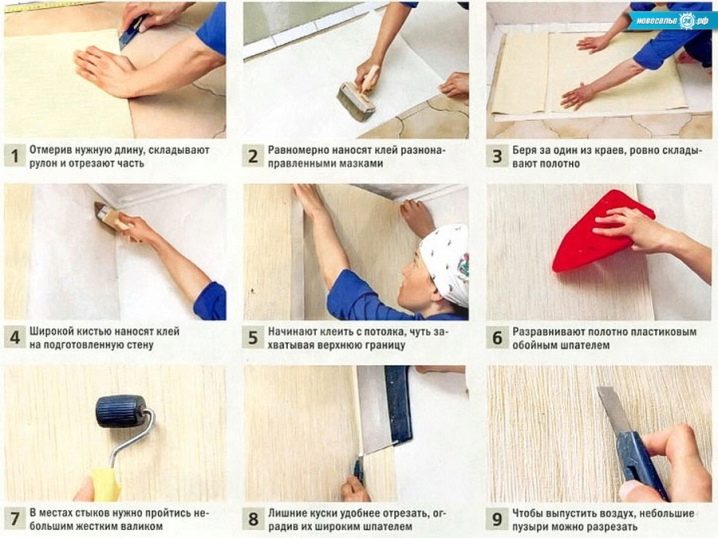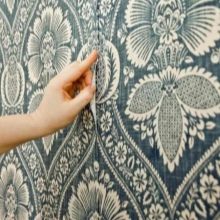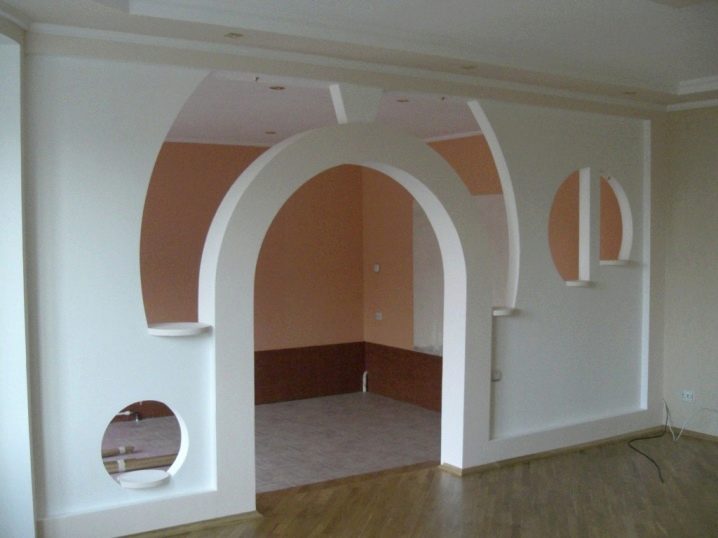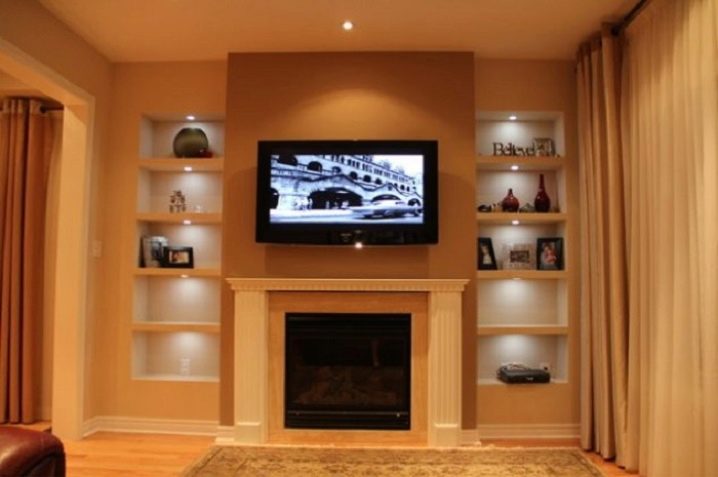How to glue wallpaper on drywall?
Currently, the market of finishing materials is so diverse and rich that it is possible to choose the ideal products for absolutely any purpose and style of the interior. However, there is an eternal classic, which has been popular for a long time and continues to enjoy an enviable demand from consumers. These traditional materials include drywall and wallpaper.
Special features
To date, the lion's share of buyers is looking for not only high-quality and easy to use, but also inexpensive finishing materials. Often things that are quite inexpensive, radically change the style and image of the interior, after which it becomes more attractive and complete.
These affordable and common options can safely include drywall.The main feature of this light and impervious material is that it easily lends itself to almost any treatment. It can be dyed, covered with wallpaper and even covered with textile linings.
This suggests that having such details in the room, the owners are free to put into practice virtually any design ideas, whether classical or avant-garde solutions.
Drywall ceilings are used for different purposes. This can be a product with a shallow niche, a detail of zoning in a studio apartment or a low semi-wall, the upper part of which can also be used as a small shelf. However, to install such a design in the interior is not enough. It also needs to be finished with high quality and competently.
Currently, many manufacturers produce high-quality and beautiful wallpapers that can be selected for any style and base material. And for drywall elements will be able to get a decent canvas. And it can be as cheap paper, and more expensive, washable or textile coatings.
Many consumers are wondering how to properly produce wallpaper sticker on a plasterboard basis.As in most cases, you first need to properly prepare the surface and only then proceed to the selection and gluing of the materials you like.
Surface preparation before sticking
Before you start finishing drywall it is necessary to properly prepare it. These works will allow the wallpaper to more reliably and firmly hold on the working surface of the base and extend their service life.
First, it is necessary to make the primer plasterboard. This stage is necessary for better adhesion of the putty to the base. Moreover, a quality primer will protect the surface from the formation of mold and fungus that are dangerous to human health.
Most modern consumers use a special acrylic primer. However, this is not the only preparatory material that provides high-quality application of wallpaper on drywall. Today in the building materials stores you can find different types of primer, both dry and ready.
Especially careful and attentive you need to be mixing the powder compositions. In these matters, you must strictly follow the recipe and instructions for breeding primer, otherwise it can be spoiled.As a rule, the primer is applied on a plasterboard base with a non-rigid brush. The soil is carefully distributed over the surface of the base, without making a strong pressure, so as not to damage the light material.
After the primer has been applied to the entire surface of the drywall, you must wait until it is completely dry.
Another important process in the preparation of the base is sizing serpyanka, which is a special fibrous ribbon, which from the side is similar to medical gauze. On the surface of this part there is a special adhesive substance so that it can be firmly attached to the joints that appear between the drywall sheets. Also, these parts are needed in order to avoid the appearance of "airbags", which can lead during the operation to the appearance of mold or mildew in the seams of the structure.
Many buyers are faced with the fact that they acquired Serpyanka not very securely fastened. In such cases, experts recommend using good old white glue in moderate amounts.
In addition, in the process of preparation the joints need to be puttied.By this process, you can go after gluing serpyanka. At the end of these works putty must be leveled. If all the steps were performed correctly, then neither the seams nor the joints on the surface of the base will be visible, and they will not “look out” from under the wallpaper layer.
In the process of preparation, you can abandon the putty in favor of plaster. Experts say that the wallpaper will be applied to the plastered base much easier and more reliable. However, referring to this variant of the base treatment, it is necessary to make sure that the joints of the wallpaper on their surface do not repeat with the seams of the gypsum boards, otherwise it will look rude and careless.
However, there are often cases when gypsum plaster still has to be applied to the ground. As a rule, such works are necessary if you are going to glue thin wallpapers (such as paper ones) that will easily highlight any defect in the underlying coating. If we are talking about the label dense and heavy canvases, then you can only do with plaster and do not apply a primer.
What can be processed?
It is undesirable to stick wallpaper on the surface of drywall, which has not passed all the necessary treatments. And this concerns not only the soil, putty or plaster, but also various protective mixtures.If the foundation was prepared and processed correctly and conscientiously, then it, together with the wallpaper, will last as long as possible and will not lose its visual appeal even after many years.
Experts recommend to process drywall with special bactericidal compounds. Also, it will not be superfluous to add an additional layer of putty during the preparatory work. To do this, cover the entire base with special antiseptics and putty the surface.
However, it is worth noting that most often there is no serious need for these actions, especially if the conditions of your home are far from extreme (there is no dampness, excess moisture and temperature changes).
In addition, the gypsum board can be treated with antifungal coatings. Using such compounds, such a light and malleable material will not become a haven for fungal growth or mold. Also, plasterboard base can be painted with water-based paint, mixed with a primer. With this combination, you can make the base a little lighter and fresher.
Protective or lightening agents are recommended to be applied to drywall with a soft roller,large construction brush or spray. Such tools will not spoil the base and will not leave dents / scratches on it.
Working with such means, it is worth wearing a respirator in order to protect the respiratory organs from the ingress of foreign powder compositions and mixtures into them.
Do I need to putty?
Putty is one of the important stages in the preparation of drywall for pasting wallpaper. However, its use is quite possible to refuse. For example, it is possible to plaster the base with high quality and immediately put on it (after complete drying) wallpaper without soil
However, in order to securely and reliably fasten the canvas to such foundations, it is necessary to start applying them earlier than 24 hours after all the defects and irregularities of the drywall are removed, and the mortar (also plaster) is completely dry.
Even if you do not use putty, it will still be necessary to seal the seams, fasteners and joints. This can also be done with plaster and special adhesive tapes.
Sticking technology
Not only plain paper but also non-woven, vinyl and many other popular canvases can be glued to the surface of drywall.In addition, on one basis, you can combine different types of wallpaper to give the interior a special taste and style.
Correctly glued coatings will help to get the following attractive effects:
- beautiful and harmonious niche selection;
- focusing on a particular area of the room or interior;
- masking of defects and irregularities of floors;
- visual expansion or reduction of space;
- underline the stylistic direction of the ensemble.
As for the direct technology of gluing wallpaper on a plasterboard base, there is much in common with the preparatory work.
- on the drywall wall, a vertical correct line is drawn with a level;
- then measure the required height and cut the strip of the desired length. It is recommended to leave a margin of about 5 cm;
- if you are gluing vinyls, the glue should be applied to the base and the very strip of wallpaper with a roller;
- If you want to glue non-woven coatings, it is permissible to apply a sticky compound only on a plasterboard base;
- As a rule, sticking canvases starts from the top (from the ceiling line).In this case, the wallpaper sheets are carefully smoothed with a plastic spatula from the center to the sides. Thus, it is necessary to gradually descend to the floor;
- The next strip of wallpaper should be aligned to the first, carefully fitting the joints;
- all work must be done until you paste over all the planned surfaces in the room;
- At the end of all stages, you need to cut off the remaining excess wallpaper at the edges.
It is worth noting that drywall is often used for finishing in a wooden house. With the help of such additions, it is possible to carry out the application of wallpaper much easier and faster, since not all wooden floors are pliable and even.
Recommendations
If you want to really finish the plasterboard basis with high quality and bring harmonious components into the interior, then you Some simple recommendations should be followed that will make an organic and neat ensemble.:
- Before applying any wallpaper, it is necessary to thoroughly and carefully clean the surface of the drywall. It should not remain traces of dust and dirt, as they will show themselves and be seen under the wallpaper.Especially it concerns those cases when there is a sticker of thin paper cloths;
- Experts recommend adding special paints to the primer mixture (for example, water-based). They should repeat the color of the drywall;
- wallpaper glue should be diluted only in a previously prepared clean container, which was not previously used for breeding any other building mixtures;
- it is recommended to stick wallpaper, starting from doorways or slopes of windows;
- as for the direct application of glue to the canvas, then this process should be carried out on a flat horizontal surface. In such conditions, the coating will not wrinkle and bend over. This is especially important when it comes to not the most dense and wear-resistant options;
- smoothing cloths is a mandatory procedure, which in no case can not be neglected. If you do not expel all the air bubbles formed under the wallpaper, the finish will not only look sloppy, but may also move away from the drywall after a short time;
- if excess glue remains at the joints between the canvases, they should be disposed of as soon as possible.An ordinary wet rag is quite suitable for this;
- if there is an interesting pattern on the wallpaper, then the correct fit of the sheets should be monitored especially carefully. Otherwise, the finish will look ridiculous and ugly;
- with regard to trimming extra edge parts, it is recommended to produce it using a sharp knife and a ruler;
- Do not forget that for different rooms it is worth picking up different wallpapers. For example, in a room with high humidity it is necessary to glue washable and dense coatings. As for the drywall base itself, it should also be treated with special antiseptic and moisture-resistant compounds;
- in the process of wallpapering, it is necessary to ensure that there is no wind or drafts in the room. Canvases applied in such conditions will not last long and can quickly peel off from the base.
Successful examples and options
Plasterboard floors, correctly and carefully trimmed with wallpaper, can radically change the style and image of the interior. For example, the original high and undulating niches in such walls will look very interesting and stylish.Between them you can place a rectangular niche for a TV and player. Such designs look especially fresh and stylish if pasted over with light pastel-colored wallpaper.
Competently made plasterboard arches with rounded lines and open windows between the rooms are ideal for spacious homes. If they are on the background of brown laminate and snow-white ceiling, then they should be decorated with white, peach or beige wallpaper. It is difficult to trim such structures, but as a result, truly unique details are obtained.
Large plasterboard designs with niches and small shelves can be decorated with nude shades. In order to give such a design a more interesting and expensive appearance, the internal niches should be trimmed with brick or stone wallpaper. As a rule, such design decisions are used in spacious dwellings.
A plasterboard wall with shelves decorated with spotlight will look amazing in a luxurious living room with a fireplace. A similar surface should be decorated with wallpaper of warm tones (peach, chocolate, soft brown or caramel).Different décor items will find their place on the shelves in the plasterboard wall, and between them there should be a free space where you can hang the TV. Similar designs are recommended to complement the curtains on the windows of similar colors (for the harmony of the interior).
If you like interesting and memorable design solutions, then you should decorate the plasterboard floors with a brick, stone or natural wood wallpaper. Such finishing materials look expensive, although often have an affordable price.
How to glue wallpaper on drywall, you can see in the next video.
